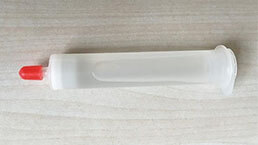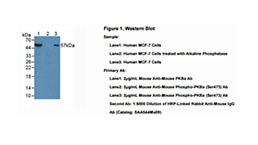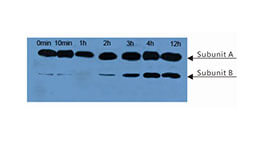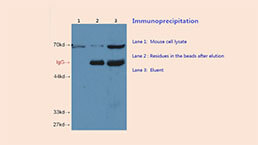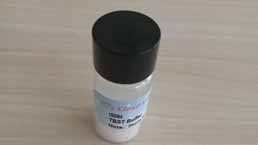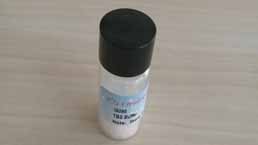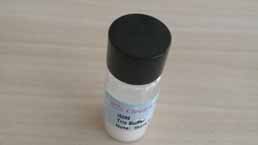FITC-Linked Polyclonal Antibody to Advanced Glycation End Product (AGE)
AGEs; Advanced Glycation End Products
- Product No.LAB353Ge81
- Organism SpeciesPan-species (General) Same name, Different species.
- SourceAntibody labeling
- Ig Type IgG
- PurificationAntigen-specific affinity chromatography followed by Protein A affinity chromatography
- LabelFITC
- Original Antibody PAB353Ge01-Polyclonal Antibody to Advanced Glycation End Product (AGE)
- Buffer FormulationPBS, pH7.4, containing 0.01% SKL, 1mM DTT, 5% Trehalose and Proclin300.
- TraitsLiquid
- Concentration1mg/ml
- Organism Species MorePan-species (General)
- ApplicationsIHC; ICC;ELISA
If the antibody is used in flow cytometry, please check FCM antibodies. - DownloadInstruction Manual
- UOM 20µl100µl 200µl 1ml 10ml
- FOB
US$ 167
US$ 390
US$ 557
US$ 1393
US$ 5570
For more details, please contact local distributors!
SPECIFITY
The antibody is a rabbit polyclonal antibody raised against AGE. It has been selected for its ability to recognize AGE in immunohistochemical staining and western blotting.
USAGE
Immunohistochemistry: 5-20µg/mL;
Immunocytochemistry: 5-20µg/mL;
Optimal working dilutions must be determined by end user.
STORAGE
Store at 4°C for frequent use. Stored at -20°C in a manual defrost freezer for two year without detectable loss of activity. Avoid repeated freeze-thaw cycles.
STABILITY
The thermal stability is described by the loss rate. The loss rate was determined by accelerated thermal degradation test, that is, incubate the protein at 37°C for 48h, and no obvious degradation and precipitation were observed. The loss rate is less than 5% within the expiration date under appropriate storage condition.
GIVEAWAYS
INCREMENT SERVICES
| Magazine | Citations |
| Human Immunology | Threshold serum concentrations of tumour necrosis factor alpha (TNFα) as a potential marker of the presence of microangiopathy in children and adolescents with type 1 diabetes mellitus (T1DM) PubMed: S0198885912005642 |
| Experimental Dermatology | A long-standing hyperglycaemic condition impairs skin barrier by accelerating skin ageing process PubMed: 22017743 |
| J Hum Nutr Diet. | Daily intake of vitamin D- or calcium-vitamin D-fortified Persian yogurt drink (doogh) attenuates diabetes-induced oxidative stress: evidence for antioxidative properties of vitamin D. Pubmed: 23829785 |
| Gene | Association of RAGE gene polymorphism with circulating AGEs level and paraoxonase activity in relation to macro-vascular complications in Indian type 2 diabetes mellitus patients. Pubmed: 23721855 |
| Gynecol Endocrinol. | Lipoprotein-associated phospholipase A2 and AGEs are associated with cardiovascular risk factors in women with history of gestational diabetes mellitus. Pubmed:24397392 |
| Microvasc Res. | Role of advanced glycation end product (AGE)-induced receptor (RAGE) expression in diabetic vascular complications Pubmed:24984291 |
| Free Radic Res. | Nitroxides prevent protein glycoxidation in vitro. Pubmed:25363554 |
| Sleep and Breathing | Serum advanced glycation end products are associated with insulin resistance in male nondiabetic patients with obstructive sleep apnea Pubmed:25566941 |
| Chem Biol Interact | Ascorbic acid and protein glycation PubMed: 26163454 |
| Osteoarthritis Cartilage | Establishment of a rabbit model to study the influence of advanced glycation end products accumulation on osteoarthritis and the protective effect of pioglitazone PubMed: 26321377 |
| journal of human hypertension | Relationship between serum levels of endogenous secretory RAGE and blood pressure in male nondiabetic patients with obstructive sleep apnea PubMed: 25994997 |
| Redox Biol. | Glycation of bovine serum albumin by ascorbate PubMed: 26202868 |
| J Oral Pathol Med | Impact of morbid obesity and bariatric surgery on antioxidant/oxidant balance of the unstimulated and stimulated human saliva PubMed: 26608886 |
| J Agric Food Chem | Inhibition of Advanced Glycation Endproduct Formation by Lotus Seedpod Oligomeric Procyanidins through RAGE-MAPK Signaling and NF-κB Activation in High-Fat-Diet Rats. PubMed: 26207852 |
| Kineziologija | ADVANCED GLYCATION END PRODUCTS'RESPONSE TO RESISTANCE TRAINING IN POSTMENOPAUSAL WOMEN WITH TYPE II DIABETES 140251: |
| Food Funct. | Effects of edible bird's nest on hippocampal and cortical neurodegeneration in ovariectomized rats PubMed: 25920003 |
| Molecular and Cellular Endocrinology | Beneficial effects of urine-derived stem cells on fibrosis and apoptosis of myocardial, glomerular and bladder cells Pubmed:26952874 |
| Advances in Experimental Medicine and Biology | Effects of S-Nitroso-N-Acetyl-Penicillamine (SNAP) on Inflammation, Lung Tissue Apoptosis and iNOS Activity in a Rabbit Model of Acute Lung Injury Pubmed:27334732 |
| Eur J Vasc Endovasc Surg | The Receptor for Advanced Glycation End Products (Rage) and Its Ligands in Plasma and InfrainCavia (Guinea pig )inal Bypass Vein Pubmed:26905625 |
| molecular and cellular endocrinology | Berberine exerts renoprotective effects by regulating the AGEs-RAGE signaling pathway in mesangial cells during diabetic nephropathy. pubmed:28087385 |
| cellular physiology and biochemistry | Inhibition of Methylglyoxal-Induced AGEs/RAGE Expression Contributes to Dermal Protection by N-Acetyl-L-Cysteine. pubmed:28214842 |
| General Physiology and Biophysics | Glutathione is the main endogenous inhibitor of protein glycation. pubmed:28218612 |
| Osteoarthritis and Cartilage | Establishment of a rabbit model to study the influence of advanced glycation end productsaccumulation on osteoarthritis and the protective effect of pioglitazone. pubmed:26321377 |
| Scientific Reports | Advanced glycation end products promote VEGF expression and thus choroidal neovascularization via Cyr61-PI3K/AKT signaling pathway pubmed:29097668 |
| INTERNATIONAL JOURNAL OF MOLECULAR MEDICINE | Lychee seed extract protects against neuronal injury and improves cognitive function in rats with type II diabetes mellitus with cognitive impairment pubmed:29138799 |
| 台湾农业研究 | (台灣農業研究67 (4): 355-364) 香菇柄水萃物改善糖尿病降低阿茲海默氏症罹病風險初探 |
| Biological Trace Element Research | Altered Mineral Metabolism and Disequilibrium Between Calcification Promoters and Inhibitors in Chronic Hemodialysis Patients Pubmed: 30847765 |
| International journal of molecular sciences | Cellular Metabolomics Reveal the Mechanism Underlying the Anti-Atherosclerotic Effects of Aspirin Eugenol Ester on Vascular Endothelial Dysfunction Pubmed: 31261711 |
| Evidence-Based Complementary and Alternative Medicine | Fushiming Capsule Attenuates Diabetic Rat Retina Damage via Antioxidation and Anti-Inflammation |
| Journal of Alzheimers Disease | Effect of Advanced Glycation End Products on the Progression of Alzheimer's Disease Pubmed: 31561370 |
| Life Sciences | Protective effect of vanillin on diabetic nephropathy by decreasing advanced glycation end products in rats Pubmed: 31759039 |
| Journal of Diabetes Research | Supplementation with Korean Red Ginseng Improves Current Perception Threshold in Korean Type 2 Diabetes Patients: A Randomized, Double-Blind, Placebo … Pubmed: 32025522 |
| Pharmaceuticals | A New Insight into Meloxicam: Assessment of Antioxidant and Anti-Glycating Activity in In Vitro Studies Pubmed: 32927809 |
| Mol Cell Endocrinol | Advanced glycation end products enhance macrophage polarization to the M1 phenotype via the HIF-1α/PDK4 pathway Pubmed: 32464167 |
| archives of gerontology and geriatrics | The effect of Korean Red Ginseng on sarcopenia biomarkers in type 2 diabetes patients Pubmed: 32470863 |
| The Role of PPARγ in Hyperglycemia-induced Deleterious Effect on Chondrocytes | |
| Biomolecules | Young and Undamaged rMSA Improves the Healthspan and Lifespan of Mice 34439857 |
| Dietary Advanced Glycation End Products Shift the Gut Microbiota Composition and Induce Insulin Resistance in Mice Pubmed:35210793 |






